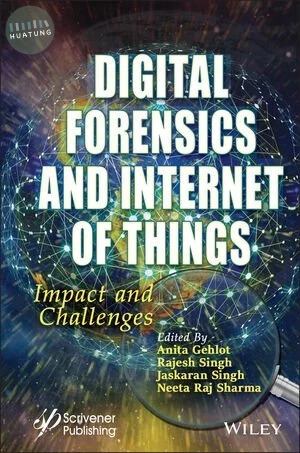
為您推薦

類似書籍推薦給您

類似書籍推薦給您

類似書籍推薦給您
DESCRIPTION FUNDAMENTALS OF INTERNET OF THINGS Fundamentals of Internet of Things: For Students and Professionals teaches the principles of IoT systems. It employs a systematic approach to explain IoT architecture models and their layers. The textbook is arranged based on various layers of an architecture model. For readers who are unfamiliar with the concept of data communication and networks, the first chapter of this book covers the fundamentals of data communication and networks. It can also be used as review material for those who are already familiar with the concept. The book begins with many examples of IoT use cases to show readers how IoT can be applied to various IoT verticals. The concept of smart sensors is then described, as well as their applications in the IoT ecosystem. Because internet connectivity is an essential part of any IoT system, the book explores wired and wireless connectivity schemes including cellular IoT in the 4G and 5G eras. IoT protocols, analytics, as well as IoT security and privacy are important topics that are explained in this book with simple explanations. The last chapter of this book is dedicated to IoT solution development. IoT is one of the most rapidly evolving technologies today, and there is no better guide to this rapidly expanding sector than Fundamentals of Internet of Things (IoT) for Students and Professionals. Features: Simple explanations of complex concepts More than 300 exercise problems and advanced exercise questions Provided solutions for the exercise problems 10 practical IoT projects

類似書籍推薦給您
MACHINE LEARNING PARADIGM FOR INTERNET OF THINGS APPLICATIONS As companies globally realize the revolutionary potential of the IoT, they have started finding a number of obstacles they need to address to leverage it efficiently. Many businesses and industries use machine learning to exploit the IoT’s potential and this book brings clarity to the issue. Machine learning (ML) is the key tool for fast processing and decision-making applied to smart city applications and next-generation IoT devices, which require ML to satisfy their working objective. Machine learning has become a common subject to all people like engineers, doctors, pharmacy companies, and business people. The book addresses the problem and new algorithms, their accuracy, and their fitness ratio for existing real-time problems. Machine Learning Paradigm for Internet of Thing Applications provides the state-of-the-art applications of machine learning in an IoT environment. The most common use cases for machine learning and IoT data are predictive maintenance, followed by analyzing CCTV surveillance, smart home applications, smart-healthcare, in-store ‘contextualized marketing’, and intelligent transportation systems. Readers will gain an insight into the integration of machine learning with IoT in these various application domains.

類似書籍推薦給您
【簡介】 DIGITAL FORENSICS AND INTERNET OF THINGS It pays to be ahead of the criminal, and this book helps organizations and people to create a path to achieve this goal. The book discusses applications and challenges professionals encounter in the burgeoning field of IoT forensics. IoT forensics attempts to align its workflow to that of any forensics practice―investigators identify, interpret, preserve, analyze and present any relevant data. As with any investigation, a timeline is constructed, and, with the aid of smart devices providing data, investigators might be able to capture much more specific data points than in a traditional crime. However, collecting this data can often be a challenge, as it frequently doesn’t live on the device itself, but rather in the provider’s cloud platform. If you can get the data off the device, you’ll have to employ one of a variety of methods given the diverse nature of IoT devices hardware, software, and firmware. So, while robust and insightful data is available, acquiring it is no small undertaking. Digital Forensics and Internet of Things encompasses: State-of-the-art research and standards concerning IoT forensics and traditional digital forensics Compares and contrasts IoT forensic techniques with those of traditional digital forensics standards Identifies the driving factors of the slow maturation of IoT forensic standards and possible solutions Applies recommended standards gathered from IoT forensic literature in hands-on experiments to test their effectiveness across multiple IoT devices Provides educated recommendations on developing and establishing IoT forensic standards, research, and areas that merit further study. Audience Researchers and scientists in forensic sciences, computer sciences, electronics engineering, embedded systems, information technology. 【目錄】